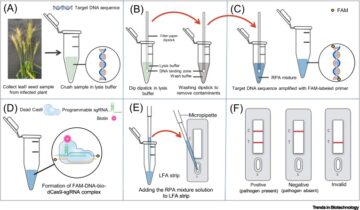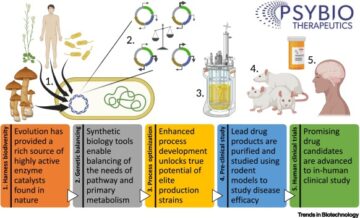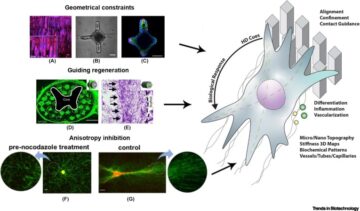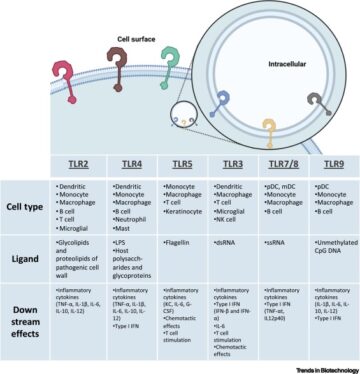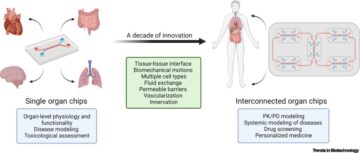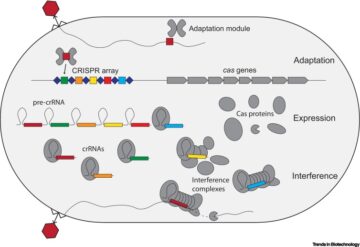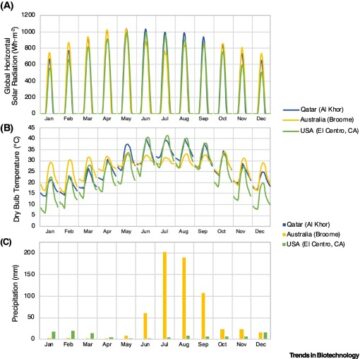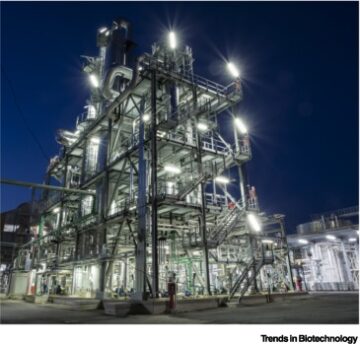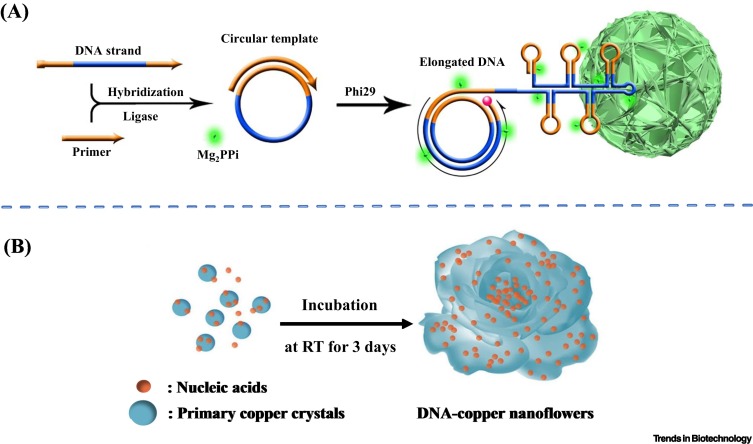
Nuclease resistance of DNA nanostructures.
Nat. Rev. Chem. 2021; 5: 225-239
Two design strategies for enhancement of multilayer-DNA-origami folding: underwinding for specific intercalator rescue and staple-break positioning.
Chem. Sci. 2012; 3: 2587-2597
Building DNA DNA nanostructures for molecular computation, templated assembly, and biological applications.
Acc. Chem. Res. 2014; 47: 1778-1788
Rolling circle amplification: a versatile tool for chemical biology, materials science and medicine.
Chem. Soc. Rev. 2014; 43: 3324-3341
Isothermal amplified detection of DNA and RNA.
Mol. BioSyst. 2014; 10: 970-1003
Recent progresses in DNA nanostructure-based biosensors for detection of tumor markers.
Biosens. Bioelectron. 2018; 109: 27-34
Preparation and biomedical applications of programmable and multifunctional DNA nanoflowers.
Nat. Protoc. 2015; 10: 1508-1524
Noncanonical self-assembly of multifunctional DNA nanoflowers for biomedical applications.
J. Am. Chem. Soc. 2013; 135: 16438-16445
Construction of rolling circle amplification-based DNA nanostructures for biomedical applications.
Biomater. Sci. 2022; 10: 3054-3061
A facile DNA/RNA nanoflower for sensitive imaging of telomerase RNA in living cells based on “zipper lock-and-key” strategy.
Biosens. Bioelectron. 2020; 147111788
Tumor-targeting cholesterol-decorated DNA nanoflowers for intracellular ratiometric aptasensing.
Adv. Mater. 2021; 33e2007738
Self-assembled DNA nanoflowers triggered by a DNA walker for highly sensitive electrochemical detection of Staphylococcus aureus.
ACS Appl. Mater. Interfaces. 2021; 13: 4905-4914
DNA-copper hybrid nanoflowers as efficient laccase mimics for colorimetric detection of phenolic compounds in paper microfluidic devices.
Biosens. Bioelectron. 2021; 182113187
DNA functional materials assembled from branched DNA: design, synthesis, and applications.
Chem. Rev. 2020; 120: 9420-9481
A mechanical metamaterial made from a DNA hydrogel.
Nat. Nanotechnol. 2012; 7: 816-820
Aptamer-based nanobiosensors.
Biosens. Bioelectron. 2016; 76: 2-19
Aptamer targeting the ERBB2 receptor tyrosine kinase for applications in tumor therapy.
Methods Mol. Biol. 2015; 1317: 3-15
Aptamer-modified tetrahedral DNA nanostructure for tumor-targeted drug delivery.
ACS Appl. Mater. Interfaces. 2017; 9: 36695-36701
Biosensing with DNAzymes.
Chem. Soc. Rev. 2021; 50: 8954-8994
DNA nanostructures as programmable biomolecular scaffolds.
Bioconjug. Chem. 2015; 26: 1381-1395
Manipulating enzymes properties with DNA nanostructures.
Molecules. 2019; 24: 24
MicroRNA-responsive release of Cas9/sgRNA from DNA nanoflower for cytosolic protein delivery and enhanced genome editing.
Biomaterials. 2020; 256120221
DNA-templated quantum dots and their applications in biosensors, bioimaging, and therapy.
J. Mat. Chem. B. 2020; 8: 9-17
Direct and efficient conjugation of quantum dots to DNA nanostructures with peptide–PNA.
ACS Nano. 2021; 15: 9101-9110
DNA nanotechnology and fluorescence applications.
Curr. Opin. Biotechnol. 2016; 39: 41-47
Simultaneous imaging of three tumor-related mRNAs in living cells with a DNA tetrahedron-based multicolor nanoprobe.
ACS Sens. 2017; 2: 735-739
One-step DNA-programmed growth of luminescent and biofunctionalized nanocrystals.
Nat. Nanotechnol. 2009; 4: 121-125
Biodegradable, multifunctional DNAzyme nanoflowers for enhanced cancer therapy.
NPG Asia Mater. 2017; 9: e365
Self-assembled multifunctional DNA nanoflowers for the circumvention of multidrug resistance in targeted anticancer drug delivery.
Nano Res. 2015; 8: 3447-3460
One-pot synthesis of multiple protein-encapsulated DNA flowers and their application in intracellular protein delivery.
Adv. Mater. 2017; 29https://doi.org/10.1002/adma.201701086
DNA nanotechnology-based biosensors and therapeutics.
Adv. Healthc. Mater. 2021; 10: 20
DNA Nanotechnology-enabled interfacial engineering for biosensor development.
Annu. Rev. Anal. Chem. 2018; 11: 171-195
DNA framework-engineered electrochemical biosensors.
Sci. China Life Sci. 2020; 63: 1130-1141
DNAzyme-gold nanoparticle-based probes for biosensing and bioimaging.
J. Mat. Chem. B. 2020; 8: 9449-9465
DNA nanostructure-based fluorescent probes for cellular sensing.
Anal. Methods. 2020; 12: 1415-1429
Aptasensors for point-of-care detection of small molecules.
Biosens. Basel. 2020; 10: 19
Electroanalytical overview: utilising micro- and nano-dimensional sized materials in electrochemical-based biosensing platforms.
Mikrochim. Acta. 2021; 188: 268
Electrochemical sensor and biosensor platforms based on advanced nanomaterials for biological and biomedical applications.
Biosens. Bioelectron. 2018; 103: 113-129
In situ generation of electrochemiluminescent DNA nanoflowers as a signal tag for mucin 1 detection based on a strategy of target and mimic target synchronous cycling amplification.
Chem. Commun. 2017; 53: 9624-9627
ChemistrySelect. 2022; 7: 8
Ingenious electrochemiluminescence bioaptasensor based on synergistic effects and enzyme-driven programmable 3D DNA nanoflowers for ultrasensitive detection of aflatoxin B1.
Anal. Chem. 2020; 92: 14122-14129
A synergistic coreactant for single-cell electrochemiluminescence imaging: guanine-rich ssDNA-loaded high-index faceted gold nanoflowers.
Anal. Chem. 2021; 93: 7682-7689
Engineering nanomaterials-based biosensors for food safety detection.
Biosens. Bioelectron. 2018; 106: 122-128
Programmable DNA circuits for flexible and robust exciton-plasmon interaction-based photoelectrochemical biosensing.
Anal. Chem. 2021; 93: 11043-11051
Graphene-coated copper-doped ZnO quantum dots for sensitive photoelectrochemical bioanalysis of thrombin triggered by DNA nanoflowers.
J. Mater. Chem. B. 2021; 9: 6818-6824
Mechanisms, methods of tracking and applications of DNA walkers: a review.
ChemPhysChem. 2020; 21: 1971-1988
Metal-organic frameworks conjugated with biomolecules as efficient platforms for development of biosensors.
Trac-Trends Anal. Chem. 2021; 141: 20
Horseradish peroxidase-encapsulated DNA nanoflowers: an innovative signal-generation tag for colorimetric biosensor.
Talanta. 2021; 221121600
Bifunctional diblock DNA-mediated synthesis of nanoflower-shaped photothermal nanozymes for a highly sensitive colorimetric assay of cancer cells.
ACS Appl. Mater. Interfaces. 2021; 13: 16801-16811
Recent advances in cancer early detection and diagnosis: Role of nucleic acid based aptasensors.
Trac-Trends Anal. Chem. 2020; 124: 11
Point-of-care testing (POCT) diagnostic systems using microfluidic lab-on-a-chip technologies.
Microelectron. Eng. 2015; 132: 46-57
A DNA nanoflower-assisted separation-free nucleic acid detection platform with a commercial pregnancy test strip.
Angew. Chem. Int. Ed. Engl. 2021; 60: 24823-24827
Loop-mediated isothermal amplification (LAMP): principle, features, and future prospects.
J. Microbiol. 2015; 53: 1-5
An aptamer-based new method for competitive fluorescence detection of exosomes.
Nanoscale. 2019; 11: 15589-15595
DNA-templated copper nanoparticles: versatile platform for label-free bioassays.
Trac Trends Anal. Chem. 2018; 105: 436-452
Label-free bioassay with graphene oxide-based fluorescent aptasensors: A review.
Anal. Chim. Acta. 2021; 1188: 13
Engineering of bioinspired, size-controllable, self-degradable cancer-targeting DNA nanoflowers via the incorporation of an artificial sandwich base.
J. Am. Chem. Soc. 2019; 141: 4282-4290
Aptamer-integrated DNA nanostructures for biosensing, bioimaging and cancer therapy.
Chem. Soc. Rev. 2016; 45: 2583-2602
Synthesis of a multi-functional DNA nanosphere barcode system for direct cell detection.
Nanoscale. 2017; 9: 14094-14102
Chemistry, biology, and medicine of fluorescent nanomaterials and related systems: new insights into biosensing, bioimaging, genomics, diagnostics, and therapy.
Chem. Rev. 2014; 114: 6130-6178
Recent advances in high-performance fluorescent and bioluminescent RNA imaging probes.
Chem. Soc. Rev. 2017; 46: 2824-2843
Y-shaped DNA-mediated hybrid nanoflowers as efficient gene carriers for fluorescence imaging of tumor-related mRNA in living cells.
Anal. Chim. Acta. 2019; 1057: 114-122
DNA-sequence-encoded rolling circle amplicon for single-cell RNA imaging.
Chem. 2018; 4: 1373-1386
Mechanisms and functions of lysosome positioning.
J. Cell Sci. 2016; 129: 4329-4339
Visualization of the intracellular location and stability of DNA flowers with a label-free fluorescent probe.
RSC Adv. 2019; 9: 15205-15209
Restriction of intramolecular motions: the general mechanism behind aggregation-induced emission.
Chem. Eur. J. 2014; 20: 15349-15353
FRET as a biomolecular research tool-understanding its potential while avoiding pitfalls.
Nat. Methods. 2019; 16: 815-829
In Situ rolling circle amplification Forster resonance energy transfer (RCA-FRET) for washing-free real-time single-protein imaging.
Anal. Chem. 2021; 93: 1842-1850
Nature-inspired DNA switches: applications in medicine.
Nanomedicine. 2017; 12: 175-179
Aptamers as targeted therapeutics: current potential and challenges.
Nat. Rev. Drug Discov. 2017; 16: 181-202
Bioswitchable delivery of microRNA by framework nucleic acids: application to bone regeneration.
Small. 2021; 17: 12
Dual roles of metal-organic frameworks as nanocarriers for miRNA delivery and adjuvants for chemodynamic therapy.
ACS Appl. Mater. Interfaces. 2021; 13: 6034-6042
Spatiotemporally programmable cascade hybridization of hairpin DNA in polymeric nanoframework for precise siRNA delivery.
Nat. Commun. 2021; 12: 12
Recent trends in cancer therapy: a review on the current state of gene delivery.
Life Sci. 2021; 269: 15
siRNA delivery systems for cancer treatment.
Adv. Drug Deliv. Rev. 2009; 61: 850-862
Biodegradable polymers in gene-silencing technology.
Polym. Adv. Technol. 2019; 30: 2647-2655
Programmable DNA nanoflowers for biosensing, bioimaging, and therapeutics.
Chemistry. 2020; 26: 14512-14524
Self-assembled peptide and protein nanostructures for anti-cancer therapy: targeted delivery, stimuli-responsive devices and immunotherapy.
Nano Today. 2021; 38: 29
DNA nanotechnology-enabled drug delivery systems.
Chem. Rev. 2019; 119: 6459-6506
A signal processor made from DNA assembly and upconversion nanoparticle for pharmacokinetic study.
Nano Today. 2022; 42: 11
Rolling circle replication for biosensing, bioimaging, and biomedicine.
Trends Biotechnol. 2021; 39: 1160-1172
Circular nucleic acids: discovery, functions and applications.
ChemBioChem. 2020; 21: 1547-1566
Bioinspired fabrication of DNA-Inorganic hybrid composites using synthetic DNA.
ACS Nano. 2019; 13: 2888-2900
Preparation and characterization of manganese, cobalt and zinc DNA nanoflowers with tuneable morphology, DNA content and size.
Nucleic Acids Res. 2018; 46: 7495-7505
Protein-inorganic hybrid nanoflowers.
Nat. Nanotechnol. 2012; 7: 428-432
A simple and eco-friendly one-pot synthesis of nuclease-resistant DNA-inorganic hybrid nanoflowers.
J. Mater. Chem. B. 2017; 5: 2231-2234
Organic–inorganic hybrid nanoflowers: types, characteristics, and future prospects.
J. Nanobiotechnol. 2015; 13: 10
Biomimetic copper-based inorganic-protein nanoflower assembly constructed on the nanoscale fibrous membrane with enhanced stability and durability.
J. Phys. Chem. C. 2016; 120: 17348-17356
Bioinspired DNA-inorganic hybrid nanoflowers combined with a personal glucose meter for onsite detection of miRNA.
ACS Appl. Mater. Interfaces. 2018; 10: 42050-42057
The biological applications of DNA nanomaterials: current challenges and future directions.
Signal Transduct. Target. Ther. 2021; 6: 28
- SEO Powered Content & PR Distribution. Get Amplified Today.
- Platoblockchain. Web3 Metaverse Intelligence. Knowledge Amplified. Access Here.
- Source: https://www.cell.com/trends/biotechnology/fulltext/S0167-7799(22)00229-3?rss=yes
- 1
- 3d
- a
- advanced
- advances
- and
- Application
- applications
- artificial
- asia
- assembled
- Assembly
- authors
- avoiding
- base
- based
- behind
- biology
- biomedical
- BONE
- Cancer
- Cancer cells
- cancer treatment
- carriers
- cascade
- Cells
- challenges
- characteristics
- chemical
- China
- Circle
- combined
- commercial
- competitive
- computation
- content
- Copper
- Current
- Current state
- delivery
- Design
- Detection
- Development
- Devices
- direct
- discovery
- dna
- drug
- durability
- Early
- ed
- effects
- efficient
- emission
- energy
- Engineering
- enhanced
- EUR
- Features
- flexible
- food
- Framework
- frameworks
- from
- functional
- functions
- future
- General
- generation
- genome
- genomics
- Gold
- Graphene
- Growth
- high-performance
- highly
- HTTPS
- Hybrid
- Imaging
- in
- innovative
- insights
- interfaces
- Life
- List
- living
- location
- made
- materials
- mechanical
- mechanism
- medicine
- method
- methods
- MOL
- molecular
- mRNA
- multiple
- nano
- Nanomaterials
- nanotechnology
- New
- next-generation
- novel
- overview
- Paper
- personal
- platform
- Platforms
- plato
- Plato Data Intelligence
- PlatoData
- Polymers
- positioning
- potential
- Pregnancy
- principle
- probe
- Processor
- properties
- prospects
- Protein
- Quantum
- Quantum dots
- real-time
- related
- release
- replication
- rescue
- research
- Resistance
- resonance
- review
- RNA
- robust
- Role
- roles
- Rolling
- Safety
- SCI
- Science
- sensitive
- Signal
- Simple
- Size
- small
- specific
- Stability
- State
- strategies
- Strategy
- Strip
- Study
- synthetic
- system
- Systems
- TAG
- Target
- targeted
- targeting
- Technologies
- Technology
- test
- Testing
- The
- their
- therapeutics
- therapy
- three
- to
- today
- tool
- towards
- Tracking
- transfer
- treatment
- Trends
- triggered
- types
- versatile
- via
- W
- Walkers
- while
- X
- zephyrnet


